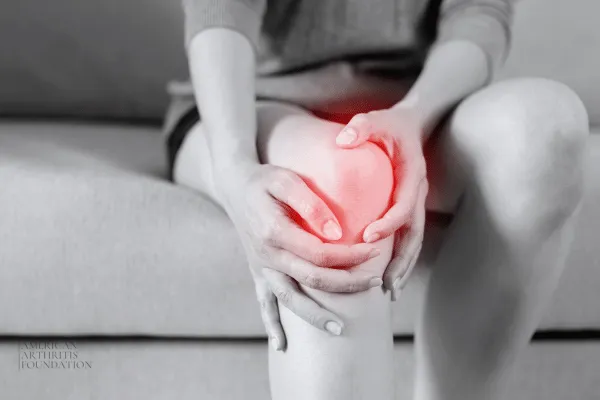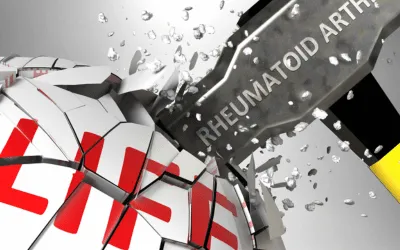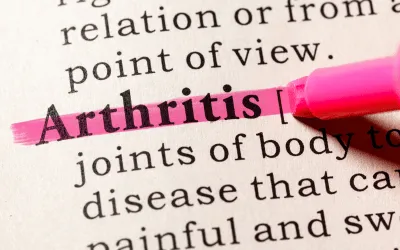About Arthritis
As the nation’s #1 cause of disability, arthritis affects nearly 60 million adults and 300,000 children. Over 100 types of arthritis and related conditions damage the joints and often other organs.
How can we assist you?
Helpful Tools for You

Managing Arthritis Pain and Symptoms: A Comprehensive Guide to Finding Relief
When you wake up with stiff joints that take hours to loosen up, or experience that familiar ache whenever you grip something, you're not alone. Arthritis affects millions of people worldwide, and if you're searching for ways to manage the constant discomfort, you've come to the right place. Pain management remains the top concern for people living with rheumatoid arthritis, psoriatic arthritis, and axial spondyloarthritis, and understanding your treatment options can make all the difference in your daily life.
Understanding Arthritis Pain: Why It Matters
Arthritis pain is complex and multifaceted. It's not just a simple ache—it's influenced by inflammation, joint damage, and even how your nervous system processes pain signals. Whether you're dealing with joint pain, stiffness, swelling, or all three combined, these symptoms can significantly impact your quality of life and functional capacity.
Research shows that up to 90% of people with rheumatoid arthritis seek professional help specifically for severe pain management. Yet despite advances in medical treatments, finding effective arthritis pain relief remains one of the biggest challenges patients face. The good news? There are multiple strategies, both medical and lifestyle-based, that can help you regain control.
The Symptoms You Shouldn't Ignore
Before exploring treatment options, let's talk about the common symptoms that signal you need a pain management strategy:
Joint pain is the most searched symptom among arthritis sufferers, and for good reason. This pain can range from mild discomfort to severe, debilitating aches that limit your mobility. It often worsens with activity and improves with rest, though it may persist throughout the day.
Morning stiffness is particularly troublesome for many patients. You might find yourself unable to fully flex your joints for hours after waking, making simple morning routines feel like major accomplishments.
Swelling and inflammation around the affected joints create visible puffiness, warmth, and redness. This inflammation is your body's immune response, but it also contributes significantly to your pain.
Fatigue often accompanies arthritis, though many patients don't realize it's connected to their joint problems. This bone-deep tiredness can be just as limiting as the physical pain itself.
If you're experiencing any combination of these symptoms, don't wait. Early intervention often leads to better long-term outcomes.
Pharmacological Pain Management Options
When it comes to arthritis pain relief, medications are often the first line of defense. Understanding your options helps you work better with your healthcare provider.
NSAIDs: The First-Line Treatment
Non-steroidal anti-inflammatory drugs (NSAIDs) remain the foundation of arthritis pain management. Medications like ibuprofen, naproxen, and aspirin work by reducing inflammation—the primary driver of pain in many arthritis types. Many people find that NSAIDs provide relatively quick relief, often within an hour of taking them.
These are available both over-the-counter and by prescription, with prescription-strength options offering more concentrated doses for severe pain. However, long-term NSAID use can affect your stomach, heart, and kidneys, so they're best used under medical supervision.
Acetaminophen: An Alternative Approach
For those who can't tolerate NSAIDs or have conditions like heart disease, high blood pressure, or kidney disease, acetaminophen offers an alternative. While it doesn't reduce inflammation as effectively as NSAIDs, it can help manage pain for some patients and may be a safer long-term option depending on your health profile.
Disease-Modifying Antirheumatic Drugs (DMARDs)
DMARDs represent a significant advancement in arthritis care. These powerful medications work by targeting the underlying disease process rather than just managing symptoms. They're particularly effective for rheumatoid arthritis and can actually slow joint damage progression.
Common DMARDs include methotrexate, which has been used for decades and remains highly effective. While they take longer to work than NSAIDs (often 6-12 weeks), the long-term benefits in pain reduction and disease management are substantial.
Biologic Therapies: Next-Generation Pain Management
Biologic treatments have revolutionized arthritis pain management over the past two decades. These medications target specific components of your immune system that drive inflammation. They're particularly effective for patients who haven't responded well to traditional DMARDs.
JAK inhibitors represent the latest advancement, offering oral medication options that provide impressive pain relief and improved function. Drugs like upadacitinib and filgotinib are among the newest treatments getting significant attention from both patients and healthcare providers.
Glucocorticoids and Steroid Injections
Corticosteroids can provide rapid inflammation reduction and pain relief, making them useful for acute flare-ups. Some patients benefit from low-dose glucocorticoids as part of their regular treatment regimen. However, long-term steroid use comes with potential side effects, so they're typically used strategically alongside other medications.
Intra-articular steroid injections—where medication is injected directly into the affected joint—can provide localized, temporary relief. These work particularly well for isolated joints causing significant pain.
Non-Pharmacological Strategies for Arthritis Pain Relief
Medication alone isn't the complete answer. The most effective pain management combines pharmaceutical and non-pharmaceutical approaches.
Exercise: More Effective Than You Might Think
Recent research reveals something encouraging: exercise is one of the most effective non-drug therapies for arthritis pain. A comprehensive analysis of nearly 10,000 patients found that aerobic exercise—including walking, cycling, and swimming—provides exceptional pain relief and improves mobility.
The benefits are remarkable: aerobic activities show the strongest evidence for both short and long-term pain reduction. Walking is particularly accessible and effective. Many patients worry that exercise will worsen their pain, but properly dosed, gentle movement actually reduces both pain and stiffness over time.
Start slowly. Even 20-30 minutes of gentle aerobic activity most days of the week can make a meaningful difference in your pain levels and overall function.
Hydrotherapy: Water as Medicine
Aquatic exercise combines movement with the benefits of buoyancy and heat. The warm water reduces joint stress while allowing fuller range of motion than you might achieve on land. Hydrotherapy has shown strong evidence for pain relief and is particularly beneficial if you have limited mobility or balance concerns.
Heat and Cold Therapy
Simple temperature therapy remains underrated. Heat relaxes stiff joints and eases pain, making it ideal for morning stiffness. Cold reduces inflammation and numbs sharp pain, working best during acute flare-ups. Many patients alternate between both strategies depending on their symptoms.
Weight Management
Carrying excess weight puts additional stress on weight-bearing joints, particularly knees and hips. Maintaining a healthy weight is one of the most impactful lifestyle modifications you can make for arthritis pain reduction. Even a 5-10% weight loss can produce noticeable improvements.
Physical Therapy and Occupational Therapy
Working with therapists trained in arthritis management can teach you proper joint protection techniques, optimal movement patterns, and adaptive strategies for daily activities. They can also prescribe specific exercises tailored to your joint involvement.
Sleep and Rest
Poor sleep worsens arthritis pain through multiple mechanisms. Prioritizing sleep quality, maintaining consistent sleep schedules, and managing stress all contribute to better pain control. However, balance rest with activity—prolonged immobility can worsen stiffness.
Managing Arthritis Flare-Ups
Even with consistent treatment, arthritis flares happen. During these periods, pain and swelling intensify. Here's how to manage them:
Increase your anti-inflammatory medication if prescribed
Apply ice or heat as appropriate
Reduce activity temporarily but maintain gentle movement
Use compression bandages or braces to reduce swelling
Consider short-term corticosteroid use if severe
Reach out to your healthcare provider if symptoms don't improve within a few days
The Role of Mental Health in Pain Management
Here's something often overlooked: your mental state directly affects your pain perception. Chronic pain and anxiety create a feedback loop where stress amplifies pain, and pain increases stress.
Addressing the psychological component of arthritis is crucial. Techniques like mindfulness, cognitive behavioral therapy, and even simple stress-reduction practices can measurably improve your pain experience. Don't hesitate to discuss mental health with your healthcare team.
Emerging Therapies on the Horizon
The arthritis treatment landscape is rapidly evolving. Several promising therapies are in development:
Nanomedicine uses tiny particles to deliver medication precisely to affected joints, potentially reducing side effects while improving efficacy.
Regenerative medicine approaches, including stem cell therapy research, aim to repair damaged cartilage rather than just managing pain.
Disease-modifying therapies currently in trials show promise for actually slowing or stopping arthritis progression, which would revolutionize pain management by addressing root causes.
Keep an eye on these developments with your rheumatologist—they may offer new options as your disease evolves.
Creating Your Personalized Pain Management Plan
Effective arthritis pain management isn't one-size-fits-all. Your plan should reflect your specific type of arthritis, disease severity, other health conditions, and personal preferences.
A comprehensive approach typically includes:
Medication optimization - Working with your rheumatologist to find the right drugs at the right doses
Regular exercise - Incorporating aerobic activity and gentle strengthening
Lifestyle modifications - Weight management, stress reduction, and improved sleep
Physical therapies - As needed for specific joint limitations
Regular monitoring - Tracking what works and adjusting strategies as your disease evolves
When to Seek Professional Help
Schedule an appointment with your healthcare provider if you experience:
Persistent joint pain lasting more than 6 weeks
Morning stiffness lasting more than an hour
Visible swelling or warmth in joints
Pain interfering with daily activities or work
Inadequate pain relief despite current treatment
New or worsening symptoms
The Bottom Line: Pain Doesn't Have to Define Your Life
Living with arthritis is challenging, but you have more control over your pain than you might think. By combining appropriate medications, regular exercise, lifestyle modifications, and professional support, most people can achieve significant pain improvement and maintain good quality of life.
Remember: arthritis pain management is a journey, not a destination. What works today might need adjustment tomorrow as your disease evolves. Stay connected with your healthcare team, remain open to trying new strategies, and celebrate the small victories—because they add up to meaningful change.
Your arthritis diagnosis doesn't have to dictate your future. With proper pain management, you can continue doing the activities you love and maintain the independence that matters to you.
Disclaimer: This article is for informational purposes only and should not replace professional medical advice. Always consult with your healthcare provider before starting new treatments or making significant changes to your current pain management plan.

Effects of Arthritis

Cause of Disability
In the United States, 23% of all adults, or more than 54 million people, have arthritis. It is a leading cause of work disability, with annual costs for medical care and lost earnings of $303.5 billion.

Workforce Effects
Sixty percent of US adults with arthritis are of working age (18 to 64 years). Arthritis can limit the type of work they are able to do or keep them from working at all.

Global Impact
In fact, 8 million working-age adults report that their ability to work is limited because of their arthritis. For example, they may have a hard time climbing stairs or walking from a parking deck to their workplace.
Promoting Interventions That Reduce Arthritis Pain
American Arthritis Foundation recognizes several proven approaches to reduce arthritis symptoms:
Be active. Physical activity—such as walking, bicycling, and swimming—decreases arthritis pain and improves function, mood, and quality of life. Adults with arthritis should move more and sit less throughout the day. Getting at least 150 minutes of moderate-intensity physical activity each week is recommended.
Protect your joints. People can help prevent osteoarthritis by avoiding activities that are more likely to cause joint injuries.
Talk with a doctor. Recommendations from health care providers can motivate people to be physically active and join a self-management education program. Should your arthritis be interfering with your activities of daily living you may be a candidate to receive many new treatments, and learn how to reverse the arthritis condition.


